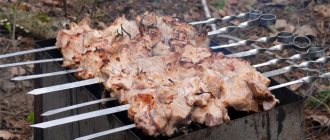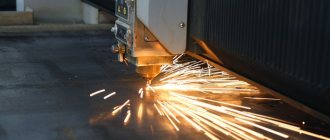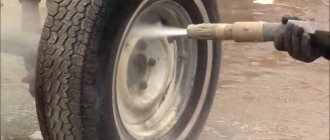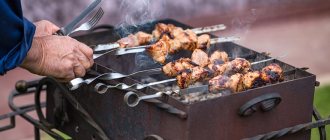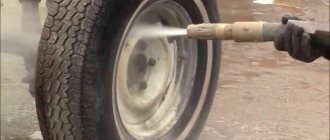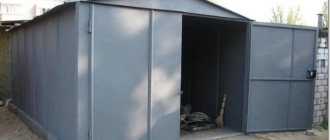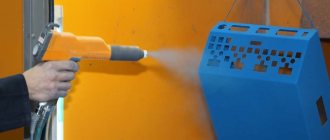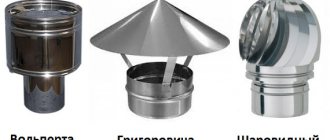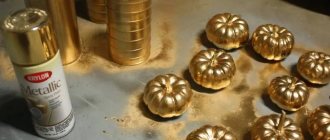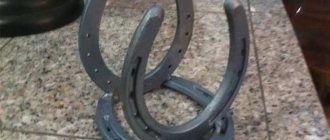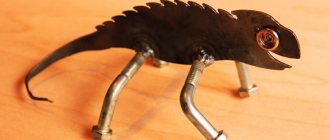Why paint the grill
Is it necessary to paint at all?
My great friend, Captain Obvious, shared advice when it’s definitely not necessary:
- the kebab maker is welded from stainless steel or cast from cast iron - you will never wait for them to rust;
- the steel has been subjected to oxidation - there is already a protective film on the surface;
- you bought a light roasting pan made of very thin metal - you shouldn’t waste time and paint, which will crumble during the first heating when the walls “lead”.
Heat and weather protection
The walls, as well as the bottom of the brazier, come into contact with an open fire, hot coals and are heated from 650 to 1500 °. In addition, water gets into the brazier, the metal rusts, and the brick is destroyed. Without a protective coating, the metal will burn out within a couple of seasons. And it doesn't look very good. Good paint will protect against these problems and even decorate the barbecue.
Firewood gives a much higher temperature than coal or briquettes
Protection of combined structures
Owners who have a stationary iron brazier with a brick casing, in addition to the question of how to paint a metal brazier, are also interested in ways to protect the brick part of the structure. Brick, like metal, suffers from weather conditions and high temperatures. The construction of a canopy over the barbecue helps to partially solve this problem, but this does not eliminate the need for protective treatment.
Among the popular products are moisture- and heat-resistant varnishes. This coating is inexpensive, but can crack in severe frosts. Another option is an oil-based heat-resistant impregnation. It is not afraid of sub-zero temperatures, but requires periodic updating.
How to paint a barbecue: paints for barbecue
Regular coating fades due to high temperature. The paint coating will have to work in extreme conditions and come into contact with food; the requirements for it are quite strict.
There are quite high requirements for paint for painting barbecues:
- withstand temperatures from 600 °C - do not crack, do not melt, do not burn;
- distribute evenly over the metal, leaving no free areas;
- do not enter into a chemical reaction with metal at normal temperature, as well as heating;
- do not release harmful substances when heated or exposed to water.
Kinds
Grill paint is the most common choice. Pros: resistant to high and low temperatures, changes, humidity, easy to apply. Enamel is stable in a limited temperature range, but looks more impressive. Suitable for external parts that are not in direct contact with fire. The varnish creates an additional protective coating and enhances its thermal protective properties.
Temperature subtleties
Based on the temperature for which the coating is designed, it is divided into 3 types:
- high-temperature - can withstand temperatures of 200-600°. Will not withstand contact with a heated surface;
- heat-resistant - designed for temperatures of 500-1000°, can withstand rapid and spot heating, but can crack from fire;
- fire-resistant - withstands more than 1000°, contact with flame.
All compositions that can withstand heating above 200° are called by the general term - heat-resistant. The temperature at which heat-resistant barbecue paint retains its properties is indicated on the packaging.
Heat-resistant paint for stoves and fireplaces on metal
Another type of paint coating belongs to the heat-resistant class - fireproof. Unlike fire-resistant, it does not withstand high temperatures, and upon contact with a flame it swells. Its task is to stop a fire if it has started. Therefore, fire-resistant paints are not suitable for barbecues.
Choosing the right consistency
Liquid paint coating is a simple and convenient option. Less common are powder coatings for metal, aerosols. Each has advantages and disadvantages.
| Characteristics | Liquid | Powder | Aerosol |
| Surface preparation | Clean from dirt, no primer required | Needs cleaning and priming | Needs cleaning and priming |
| Application | Easy to apply, good adhesion, filling small cracks | Uniform application, reusable powder | A uniform thin layer without streaks or drops, gets into hard-to-reach places |
| Palette and tinting | Rich palette, tinting possible | Varied palette, tinting is not possible, different textures | Varied palette, independent tinting is not possible |
| Tools | Brush, container for diluting paint | Sprayer, kiln (cannot be replaced by open fire) | Not required |
| Drying time | From 2 hours to a day depending on the type of paint | Up to half an hour | Up to 1 hour |
| Protective properties | High | High | Average |
| Life time | 10 years | 15 years | 5 years |
| pros | Easy to use, easy to use, no special skills required | Safety, low paint consumption, quick drying, even coating | The ability to quickly paint a kebab maker at home |
| Minuses | Leaks, leaves stains, drops, takes a long time to dry, unpleasant smell, fades, cracks | Requires special equipment, skills, difficult to access at home, requires a workshop | If it gets on foreign objects, it is dangerous for the respiratory tract (a construction respirator is required). If the paint is dry, it cannot be thinned. |
How to paint a metal grill and how to choose quality paint
Heat-resistant acrylic and organosilicon compounds are suitable for barbecues. Acrylic is available in liquid and aerosol form, is easy to apply, does not crack, and does not bubble from fire. It works at temperatures up to 800°, but from prolonged contact with open fire it loses its beneficial properties.
Organosilicon paints are only liquid. They provide reliable protection against fire and can withstand temperatures up to 1000° for 3-4 hours. They take a long time to dry and do not produce such a variety of colors as acrylic.
Common colors are black, gray. Soot, dirt, and coal marks are invisible on them.
The color of the coating does not directly affect the thermal protective properties. However, black coatings are produced that can hold temperatures of 600, 800, 1000°, and, for example, pink or red - only up to 500-600°.
Popular brands (Russia, Ukraine, Belarus):
- Kudo;
- Certa;
- Bosny;
- Decorix;
- Veslee;
- Elcon;
- Grog.
These brands offer paints, enamels, and varnishes of any color. The most popular consistency is an aerosol can. It takes two cans of 600 degree aerosol paint to cover a barbecue from a 50-liter gas cylinder.
Despite the higher cost, heat-resistant paint for stoves and fireplaces marked 700 degrees has proven to be much more economical. Half a 350 g jar is enough to cover the body twice. It is also more resistant to fire during prolonged use of the kebab grill.
Where can the material be used?
Paint for brake discs
Fire-resistant paint is used not only at home; its use is of great importance for metal surfaces that need protection during a fire. The following compositions are used for:
- Emergency and emergency exits and stairs
- Fireproof paint is used for bridges and pillars
- Containers containing fuel and lubricants are painted according to the same principle
- Oil pipelines
But not only in such cases are these materials used, because in the automotive industry, protection from high temperatures is also necessary. That is why engines and exhaust pipes are painted with this paint. I want to say that the list of possible objects that need to be coated with heat-resistant mixtures is very large, but I just needed to paint the grill, although this process also has its own nuances.
Important! The heat-resistant paint used for the barbecue does not emit harmful substances when heated. Paints for barbecues protect the coating from the influence of open fire and at the same time remain in its original form.
Painting the grill with heat-resistant paint
Tools and materials
Tools needed for work:
- brush or sandpaper to clean the surface;
- acetone or any liquid containing it;
- rags for working with acetone;
- primer;
- dye;
- brush, backing;
- gloves;
- respirator.
Surface preparation
Painting begins with surface preparation. This step cannot be skipped: the color will lie unevenly, and corrosion will continue to damage the metal. Work outdoors in warm, dry, windless weather or indoors with good ventilation. The face, hands, clothing, and surrounding objects are protected with cloth, film or paper.
The collapsible grill is completely disassembled. Elements that do not come into contact with the fire - a thermometer, wooden or plastic handles, an additional table - are removed or covered with protective tape.
The next stage is cleaning the metal with a brush or sandpaper. Completely remove dirt, soot, traces of coals, and surface rust. The completely cleaned surface is degreased with acetone. Allow to dry. If a primer is used, it is applied and also allowed to dry.
A gas cylinder grill prepared for painting
The grill is painted only on the outside. There is no need to paint the interior surfaces - fire-resistant paint should not come into contact with food. Soot accumulates inside the kebab maker in any case, and the aesthetic effect of painting is minimal.
Painting the barbecue
Painting with heat-resistant paint - aerosol from a spray can:
- Prepare the barbecue.
- Shake the can.
- Spray the product from a distance of 20 cm.
- Each layer dries in 30 minutes.
- Apply 2-3 layers.
- After a day, light it and leave it to burn for 15 minutes.
Painting with liquid paint:
- Prepare the barbecue.
- Mix the paint.
- Apply the composition with a brush.
- Allow the paint to dry for at least an hour.
- Apply another layer.
- Burn.
The layers must be applied in a thin layer to avoid peeling.
Useful tips
For better results, we suggest using some tips. Then the result will please the eye for a long time:
- Paint using an aerosol, preferably in calm weather.
- The grill needs to be painted from the outside.
- After cleaning the surface from dirt, you can wash it and let it dry thoroughly.
- When painting, it is necessary to create such that when drying, dust and foreign particles do not fall on the surface. The result of this coloring may be disappointing.
In conclusion, we can say that the process of painting a barbecue is not as tedious as it seems. But it must be approached carefully. It is necessary to choose a suitable paint that meets all basic requirements. Next, prepare the surface to be treated. Apply several layers, first allowing them to dry thoroughly. That's all! Follow the process technology so that the grill does not deteriorate or rust.
DIY heat-resistant paint for barbecue
Heat-resistant paint based on liquid glass is very easy to make with your own hands. Simply mix the ingredients in a plastic bottle and shake well.
Liquid glass is a heat-resistant material that is used for low-cost metal coating. The simplest composition is 200 g of liquid glass and 10 g of silver powder - serebryanka.
They also paint the outside in 2-3 layers. Each layer dries for 10-15 minutes. The composition must be applied immediately after preparation.
Types of fire-resistant paints
All fire-resistant coatings differ from each other in a number of properties:
- Organosilicon thermal paints and enamels. Coating with such a dye will create a durable layer that will be resistant to aggressive agents. This paint can only be applied to the outer part of the grill. Heat-resistant, can withstand temperatures of 200-600 degrees. They have a pungent odor.
- Acrylic paints. They adhere firmly to the metal when applied to the surface of the grill. The aerosol form of the dye will provide convenient application. Withstands heat up to 900 gr.
- Dry heat-resistant mixture. It is used mainly by industry, since the application process is very complex. The silicone-based dye forms a dense and durable coating on the metal surface. Next, the treated structure is placed in an oven to dry.
There is a certain marking on the paint package.
It contains alphanumeric symbols. For example, if the marking “KO” is present, then this means that it is silicone paint. Next come the numbers. The first shows the purpose. For example: 8 means heat resistance. The remaining numbers indicate the catalog number of the development. Let's look at the purpose of paints:
- KO-811. Protects metal from corrosion. Resistant to temperature changes and moisture.
- KO-813. Protects the surface at temperatures up to 500 degrees. The coating is resistant to corrosion, moisture, and sudden temperature changes.
- KO-814. The coating is resistant to salts. Withstands temperatures up to 400 degrees.
- KO-8111. For processing metal surfaces that will be exposed to temperatures of about 600 degrees.
How to choose the right dye?
In order to choose the right paint, you need to pay attention to:
- Corrosion protection.
- Heat protection within 600-800 degrees Celsius.
- No harmful components that can be released when heated.
- Resistance of the coating to chemical influences.
- Abrasion resistance.
- The coating must withstand temperature changes.
Burnishing the grill
An alternative to painting a metal Dutch oven is bluing. Another name is blackening, chemical oxidation. For work, caustic chemical compounds are used - a combination of caustic soda, sulfuric acid and laundry soap.
Sequencing:
- The surface is thoroughly cleaned of rust.
- The parts are immersed in a container with sulfuric acid for 5 minutes.
- Dissolve the soap in water and bring to a boil. The parts are immersed in the solution for 10 minutes.
- The caustic soda solution is heated to 140°. The parts are in it for 1.5 hours.
- Then rinse with running water.
Work only with gloves, respirators, and protective clothing.
The result of blueing a barbecue at home is black metal that does not rust or burn.
How to paint a brick grill
The porous structure of the brick absorbs dirt, soot and dust; it is difficult to clean the stove, and over time it loses its appearance. Therefore, the new brick hearth is painted with heat-resistant paint. Outdoors and in the gazebo, the coating protects the barbecue from humidity and temperature changes that destroy the brick.
Organosilicon compounds, acrylic and alkyd paints are used for work. The latter produce bright colors, but are not sufficiently resistant to heat. Only the outer surface is painted: the walls of the firebox and the chimney.
Common brands:
- Elcon;
- Decorix;
- Kudo;
- Ecoterra;
- Prestige.
Popular colors are natural brick, red copper, gold, red, white, yellow. An ancient recipe for heat-resistant coating is a mixture of egg yolks and milk in equal parts. The components are mixed until smooth.
For single-layer painting 2 sq.m. the front wall of the barbecue will need two cans
Groups of heat-resistant paints
Heat Resistant Engine Paint
Since we have looked at the areas of use of heat-resistant paints, now it is necessary to understand into which groups they are divided. After all, there are different temperatures, and if we paint radiators that heat up to 100 degrees, then there are industrial facilities whose temperature rises to 1000. For convenience, I made a small plate:
| Temperature | Compound | Application |
| Up to +100 degrees | Acrylic and alkyd resins | In everyday life when painting radiators and pipes |
| Up to +200 | Epoxy enamels | Household use |
| Up to +450 | Epoxy ester or ethyl silicate resin | Painting kebabs and barbecue boxes |
| Up to +600 | Polymer and silicone resins | Used in industry |
| Over +650 | Polymer components and glass | They paint heating boilers, boilers, and use them in automobile production. |
Operation results
When properly applied high-quality heat-resistant paint, the metal structure does not burn or rust. The paint lasts 4-5 years. With active use, it lasts for 2-3 seasons, depending on weather conditions. To make a metal kebab maker last longer, it is covered and stored in a dry place.
The exterior brick barbecue is repainted every season. In winter, due to changes in temperature and humidity, the coating cracks. Before applying new paint, the old layer and dust are removed with a brush.
Coloring will definitely extend the life of the kebab maker. And you already know how to paint the grill.
Why don't we use regular paints?
Paints for barbecues and other heated surfaces must have certain properties that conventional paint compositions simply do not have. That is why heat-resistant paint is necessary for painting stoves, radiators, barbecues and other surfaces.
Grill paint
Painting with conventional paints is not allowed for a number of reasons, which we will consider further:
- The color of the coloring pigment will definitely change due to the increase in temperature. Any coating may simply turn yellow or blacken
- The coating will crack, and its complete or partial peeling is also possible.
- The binder base will be lost, and the paint layer will be charred and completely destroyed
The heat-resistant mixture has different compositions, which differ depending on the area of application of the material. For example, heat-resistant paint is suitable for a brick oven - its natural composition does not harm human health and thanks to it the coating conducts heat and does not collapse. It can be used for self-painting in a private home.
